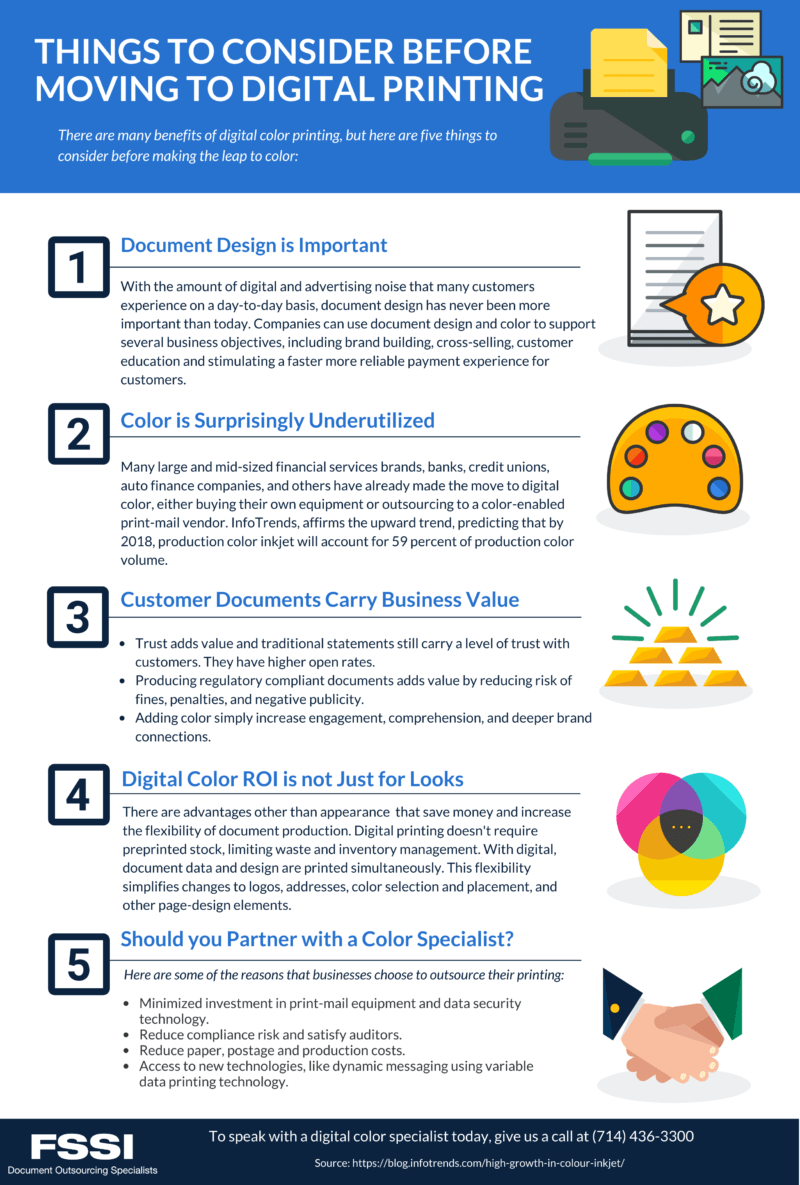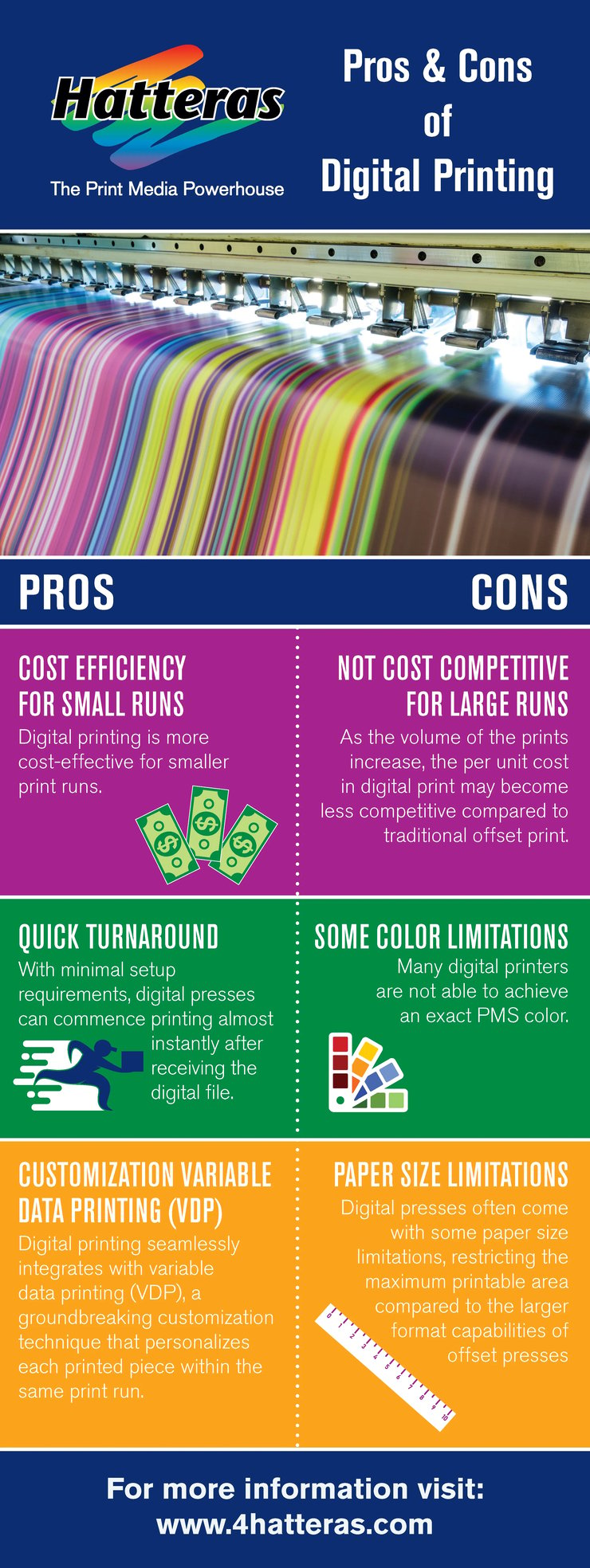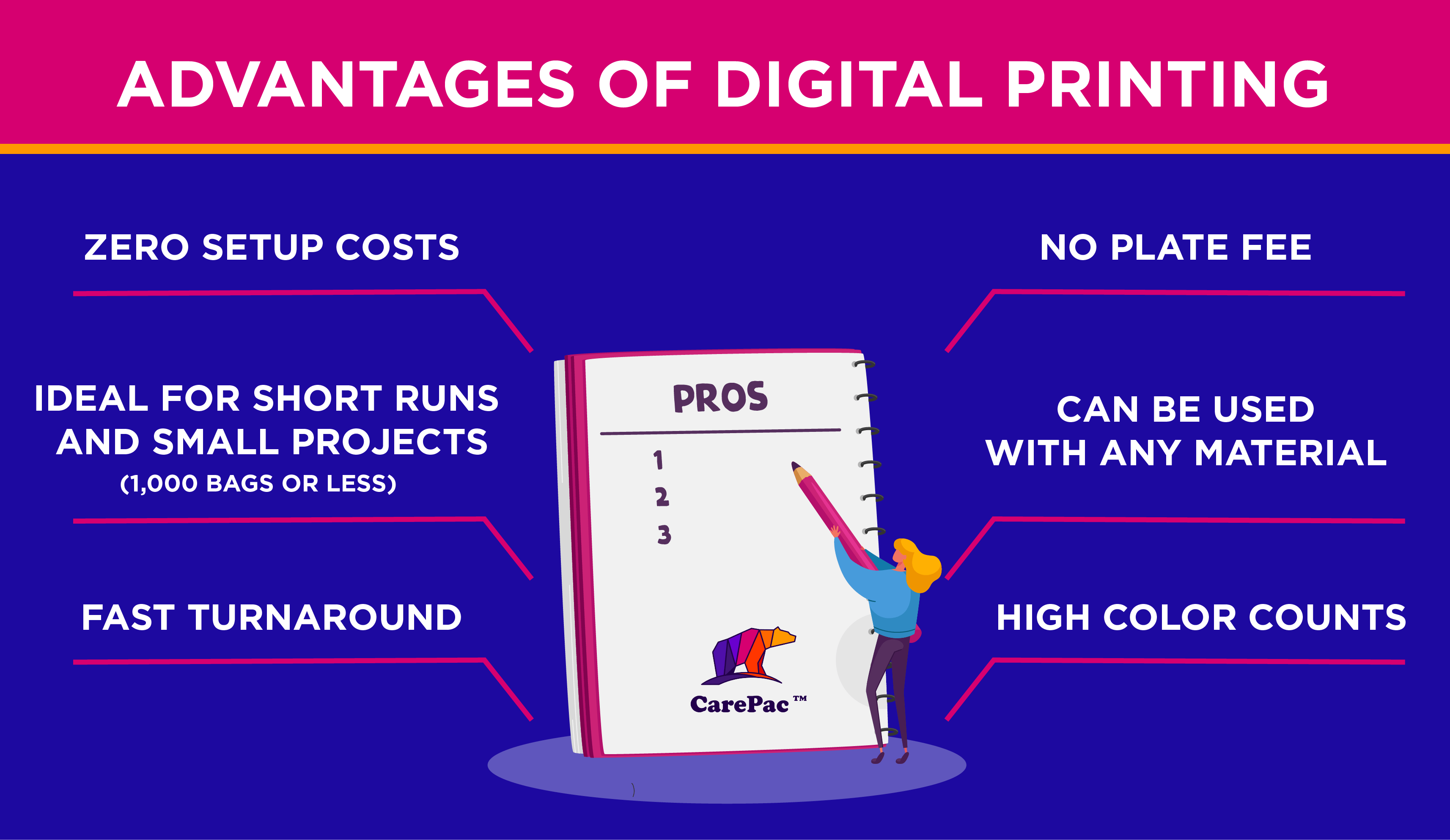The Basic Principles Of Digital Printing
The Basic Principles Of Digital Printing
Blog Article
Digital Printing Can Be Fun For Anyone
Table of ContentsThe Facts About Digital Printing UncoveredDigital Printing Things To Know Before You Get ThisExcitement About Digital PrintingDigital Printing Things To Know Before You BuyDigital Printing - The FactsThings about Digital Printing
Variable information printing, such as direct mail with personalized codes and addresses, is ideally fit for electronic printing. Digital quick printing only needs four steps of style, review, printing and binding to get whatever done. Digital quick printing has an unparalleled advantage: print on need.According to PMMI, electronic printing permits brands and manufacturers to react rapidly to client demands while boosting the supply chain, minimizing warehousing expense and waste, and delighting in faster time to market. That all audios fantastic, but just how does this innovation do all that? The significant differentiator of these innovations is that there are no set-up charges and no plates with electronic printing.
The 9-Second Trick For Digital Printing
According to Wikipedia, the best difference between electronic printing and conventional approaches such as lithography, flexography, gravure, or letterpress - Digital Printing is that there is no need to replace printing plates in digital printing, whereas in these analog printing methods the plates are consistently changed. This causes quicker turn-around time and reduces cost when utilizing electronic printing.
Rapid manufacturing implies obtaining your product to market faster. It likewise suggests it's simpler and faster to make modifications in the future, when you alter a dish, include a SKU, or develop seasonal product packaging. Digital printing is highly flexible, so it's easy to make modifications to the bundle layout quickly. It all goes back to the plates.
With conventional printing methods, short-run printing is simply not feasible. Since an excellent style can make or break your product, electronic printing constantly creates high-grade, clear and vivid graphics each time.
Digital printing is the process of printing digital-based images straight onto a range of media substratums. There is no demand for a printing plate, unlike with countered printing. Digital data such as PDFs or desktop posting documents can be sent out directly to the electronic printing press to print on paper, image paper, canvas, material, synthetics, cardstock and other substratums.
Little Known Questions About Digital Printing.
According more helpful hints to PMMI, electronic printing allows brand names and makers to react swiftly to customer needs while boosting the supply chain, decreasing warehousing price and waste, and delighting in faster time to market. That all sounds excellent, but how does this modern technology do all that? The major differentiator of these modern technologies is that there are no set up fees and no plates with digital printing.
According to Wikipedia, the best difference in between digital printing and traditional techniques such as lithography, flexography, gravure, or letterpress is that there is no need to change printing plates in electronic printing, whereas in these analog printing methods the plates are repetitively replaced. This results in quicker turn-around time and decreases price when making use of digital printing.

7 Simple Techniques For Digital Printing
With conventional printing approaches, short-run printing is just not possible. Because a terrific style can make or break your item, electronic printing consistently produces Home Page high-grade, clear and vivid graphics each time.

According to PMMI, electronic printing allows brands and makers to react quickly to customer needs while improving the supply chain, minimizing warehousing price and waste, and taking pleasure in faster time to great post to read market. That all audios wonderful, however how does this technology do all that? The major differentiator of these innovations is that there are no set up fees and no plates with electronic printing.
An Unbiased View of Digital Printing
This results in quicker turnaround time and lowers expense when using electronic printing.
Digital printing is extremely versatile, so it's simple to make adjustments to the bundle layout quickly. It all goes back to the plates.

Unknown Facts About Digital Printing
Digital printing is the process of printing digital-based images directly onto a variety of media substratums. There is no requirement for a printing plate, unlike with offset printing. Digital files such as PDFs or desktop computer posting documents can be sent straight to the digital printing machine to publish on paper, picture paper, canvas, textile, synthetics, cardstock and various other substratums.
Report this page